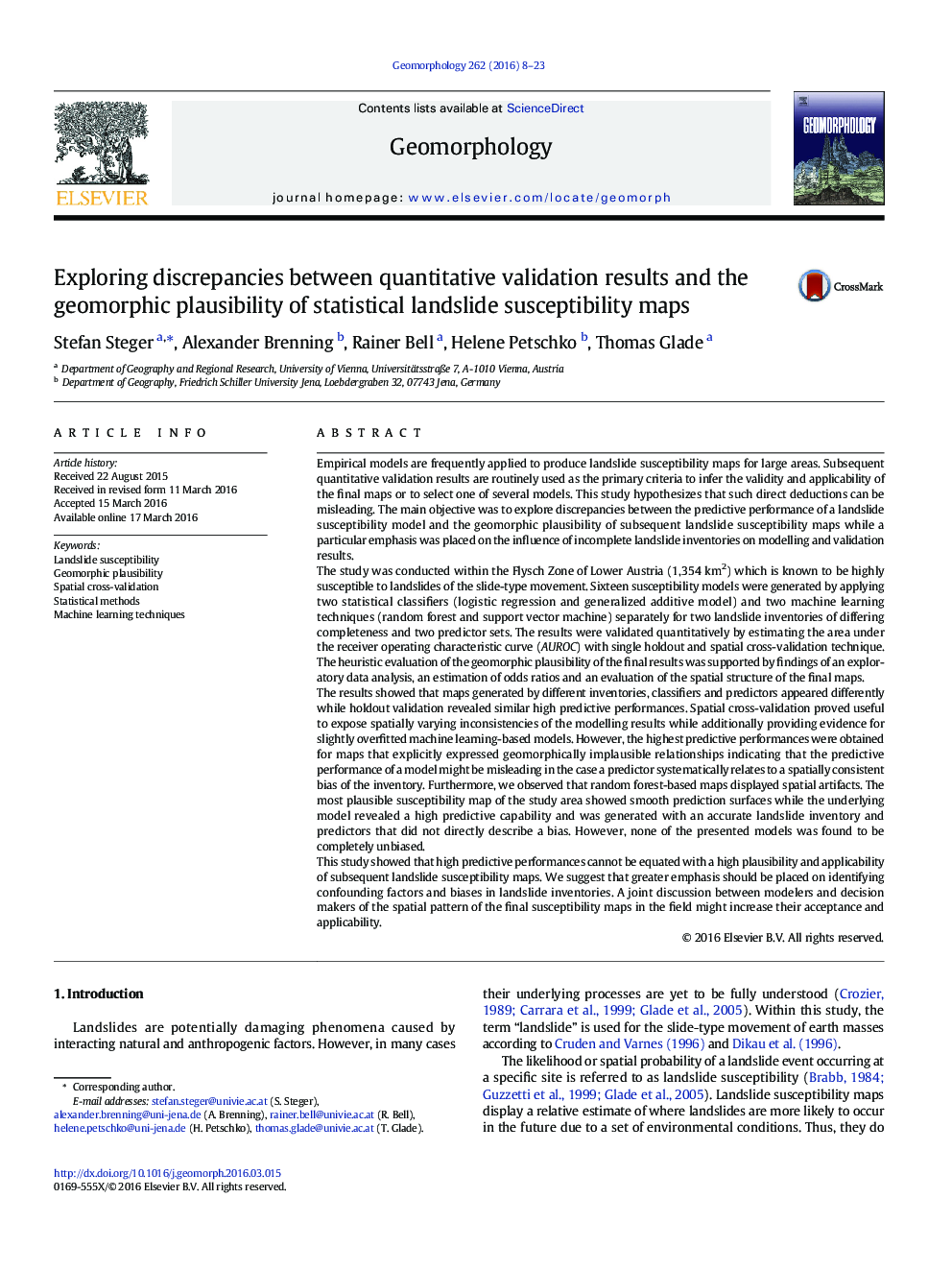| Article ID | Journal | Published Year | Pages | File Type |
|---|---|---|---|---|
| 4683989 | Geomorphology | 2016 | 16 Pages |
•A high predictive performance cannot be equated with a high geomorphic plausibility of landslide susceptibility maps•An inclusion of inventory-based biases may enhance the apparent predictive performance of a model•Comparison of models generated by differing inventories, classifiers (statistical and machine learning) and predictors•Evaluation of the spatial structure and geomorphic plausibility of landslide susceptibility maps•Exposing limitations of conventional single holdout validation and advances of spatial cross-validation
Empirical models are frequently applied to produce landslide susceptibility maps for large areas. Subsequent quantitative validation results are routinely used as the primary criteria to infer the validity and applicability of the final maps or to select one of several models. This study hypothesizes that such direct deductions can be misleading. The main objective was to explore discrepancies between the predictive performance of a landslide susceptibility model and the geomorphic plausibility of subsequent landslide susceptibility maps while a particular emphasis was placed on the influence of incomplete landslide inventories on modelling and validation results.The study was conducted within the Flysch Zone of Lower Austria (1,354 km2) which is known to be highly susceptible to landslides of the slide-type movement. Sixteen susceptibility models were generated by applying two statistical classifiers (logistic regression and generalized additive model) and two machine learning techniques (random forest and support vector machine) separately for two landslide inventories of differing completeness and two predictor sets. The results were validated quantitatively by estimating the area under the receiver operating characteristic curve (AUROC) with single holdout and spatial cross-validation technique. The heuristic evaluation of the geomorphic plausibility of the final results was supported by findings of an exploratory data analysis, an estimation of odds ratios and an evaluation of the spatial structure of the final maps.The results showed that maps generated by different inventories, classifiers and predictors appeared differently while holdout validation revealed similar high predictive performances. Spatial cross-validation proved useful to expose spatially varying inconsistencies of the modelling results while additionally providing evidence for slightly overfitted machine learning-based models. However, the highest predictive performances were obtained for maps that explicitly expressed geomorphically implausible relationships indicating that the predictive performance of a model might be misleading in the case a predictor systematically relates to a spatially consistent bias of the inventory. Furthermore, we observed that random forest-based maps displayed spatial artifacts. The most plausible susceptibility map of the study area showed smooth prediction surfaces while the underlying model revealed a high predictive capability and was generated with an accurate landslide inventory and predictors that did not directly describe a bias. However, none of the presented models was found to be completely unbiased.This study showed that high predictive performances cannot be equated with a high plausibility and applicability of subsequent landslide susceptibility maps. We suggest that greater emphasis should be placed on identifying confounding factors and biases in landslide inventories. A joint discussion between modelers and decision makers of the spatial pattern of the final susceptibility maps in the field might increase their acceptance and applicability.
